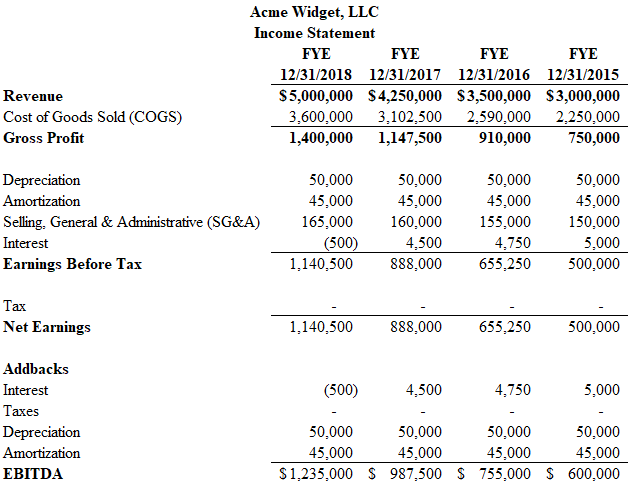

But, critics maintain that a change in the price level occurs independently and this later on influences money supply. Thus, Fisher’s equation of exchange represents equality between the supply of money or the total value of money expenditures in all transactions and the demand for money or the total value of all items transacted. The supply of money consists of the quantity of money in existence fisher equation multiplied by the number of times this money changes hands, i.e., the velocity of money . In Fisher’s equation, V is the transactions velocity of money which means the average number of times a unit of money turns over or changes hands to effectuate transactions during a period of time. Put another way; the nominal interest rate is equal to the real interest rate plus the inflation rate.
- Fisher’s approach stresses the supply of money, whereas, the Cambridge approach lays more emphasis on the demand for money to hold cash.
- The concept of the Fisher equation has great significance in the field of finance and economics.
- This pre-fixed interest rate does not have permission to take into account any fees or compounding of interest.
- The velocity of money is the rate at which money changes hands to effectuate transactions.
Besides his extensive derivative trading expertise, Adam is an expert in economics and behavioral finance. Adam received his master’s in economics from The New School for Social Research and his Ph.D. from the University of Wisconsin-Madison in sociology. He is a CFA charterholder as well as holding FINRA Series 7, 55 & 63 licenses. He currently researches and teaches economic sociology and the social studies of finance at the Hebrew University in Jerusalem. Get instant access to video lessons taught by experienced investment bankers. Learn financial statement modeling, DCF, M&A, LBO, Comps and Excel shortcuts.
According to Keynes, as long as there is unemployment, every increase in money supply leads to a proportionate increase in output, thus leaving the price level unaffected. The transactions version of the quantity theory of money was provided by the American economist Irving Fisher in his book- The Purchasing Power of Money . According to Fisher, “Other things remaining unchanged, as the quantity of money in circulation increases, the price level also increases in direct proportion and the value of money decreases and vice versa”. It is frequently used in calculating returns on investments or in predicting the behavior of nominal and real interest rates.
The non-monetary factors, like taxes, prices of imported goods, industrial structure, etc., do not have lasting influence on the price level. These factors may raise the prices in the short run, but this price rise will reduce actual money balances below their desired level. This will lead to fall in money spending and a consequent fall in the price level until the original price is restored. Various instruments of credit control, like the bank rate and open market operations, presume that large supply of money leads to higher prices.
The relationship was first described by American economist Irving Fisher in 1930. In the fisher effect, the nominal interest rate is provided with actual interest rate which reflects its monetary growth padded over time to a certain amount of currency or money owned by a financer. Real interest rate is the total amount of purchasing power of the lent money as it grows over a period of time. The Fisher equation has proven to be useful within the area of monetary policy. The application of the Fisher equation proves that monetary policy can move nominal interest rates and inflation in the same direction. Don Patinkin has critcised Fisher for failure to make use of the real balance effect, that is, the real value of cash balances.
Comparison of the Exp-function method with other methods
Thus it was unrealistic for Fisher to assume V to be constant and independent of M. To correct a nominal interest rate for inflation, subtract the inflation rate from the nominal interest rate. Nominal interest rates reflect the financial return an individual gets when they deposit money. For example, a nominal interest rate of 10% per year means that an individual will receive an additional 10% of their deposited money in the bank. Originally, the lender had expected to earn a real interest rate of around 3.85%.
Because it can calculate the expected figure of purchase power according to ongoing rates of inflation, you can use it describe the “real” return of the total investment in the context of what profits will buy. For instance, if you buy a 12-months bonds of deposit of $10,000 at an interest rate of 0.94%, with a constant inflation, then you will have the total amount of $10,094 at the end of year. MV is the product of the quantity of money in existence , and the velocity of money and PT is the product of the average price level of goods & services in an economy & the total available transactive amount. PT is the demand for money for transaction purposes and is considered equal to the total market value of all goods & services available for market transactions. P is the average price level, while T is the total number of transactive goods & services.
Thus, MV refers to the total volume of money in circulation during a period of time. Since money is only to be used for transaction purposes, total supply of money also forms the total value of money expenditures in all transactions in the economy during a period of time. Whereas, monetary policy generally does not affect the real interest rate.
Truly believes everyone can solve seemingly difficult problems if they try hard enough. Fisherian and Cambridge approaches are not fundamentally different from each other because they represent two sides of the same phenomenon. The Fisherian approach emphasises money as a stock, while the Cambridge approach stresses money as flow. We will also send you FREE plagiarism reports, so you don’t have to worry about anything on that front.

Fisher equation is commonly arises in chemistry, heat and mass transfer, biology and ecology. In mathematics Fisher equation is also known as Kolmogorov Petrovsky-Piscounov equation, KPP equation or Fisher KPP equation. Fisher equation describes the process of interaction between diffusion and reaction. In this paper a semi implicit method is used to solve the Fisher equation. A semi implicit finite difference scheme has been designed for numerical solution of one dimensional nonlinear Fisher equation. The designed scheme accuracy is first order in time and second order in space.
How does the Fisher effect affect the exchange rate?
Moreover, excessive growth in the liquidity can often lead to high rates of inflation which can further push the economy to Hyperinflation. The Fisher’s Equation for Nominal Interest Rate represents the Fisher Effect in practice. As mentioned in the previous section, the Fisher Effect is an economic theory that describes the effect of inflation on interest rates.

Since money is only a medium of exchange, changes in the money supply change absolute , and not relative , prices and thus leave the real variables such as employment and output unaltered. The quantity theory of money assumed money only as a medium of exchange. Irving Fisher further extended the equation of exchange so as to include demand deposits (M’) and their velocity, (V’) in the total supply of money. Money is demanded not for its own sake (i.e., for hoarding it), but for transaction purposes. The demand for money is equal to the total market value of all goods and services transacted. It is obtained by multiplying total amount of things by average price level .
Fisher Effect
The Fisher Effect is an economic theory created by economist Irving Fisher that describes the relationship between inflation and both real and nominal interest rates. The Fisher Effect states that the real interest rate equals the nominal interest rate minus the expected inflation rate. Therefore, real interest rates fall as inflation increases, unless nominal rates increase at the same rate as inflation. The Fisher equation is a concept of economics stating the relationship between nominal interest rates and real interest rates. The bond given between the two is derived under the effect of inflation. According to the Fisher equation, the nominal interest rate is equal to the sum of the real interest rate and inflation.
Money is considered neutral and changes in money supply are believed to affect the absolute prices and not relative prices. Keynes criticises this view and maintains that money plays an active role and both the theory of money and the theory of value are essential parts of the general theory of output, employment and money. It describes the causal relationship between the nominal interest rate and inflation. It states that an increase in nominal rates leads to a decrease in inflation. The key assumption is that the real interest rate remains constant or changes by a small amount. MV is the product of the quantity of money in existence and the velocity of money .
Market news
Any method cannot give new exact solutions to the KdV–Burgers equation. Was not found by means of the Exp-function method as well but it could be found. However, we think the application of the singular manifold approach for constructing exact solution to the Fitzhugh–Nagumo equation is easier than the application of the Exp-function method. On first sight, this appears to be a rather daunting equation for which we have to find an analytical traveling wave solution.
Call us, mail us or chat live with our representatives as you wish and tell them what you need. Chosen via challenging selection gauntlets, our economics subject matter experts are hard-working, intelligent, knowledgeable, and dedicated to providing the best possible assistance. For example, the United States Government’s Bureau of Labour Statistics publishes inflation data each month. Along with an in-depth knowledge in marketing I am also skilled in composing assignments especially case studies with pr… I am thorough with the changing financial scenario in US and the factors behind it.
Note that the above is the exact opposite of the mechanism described in the monetary policy section. It is a new theoretical framework in response to the unconventional monetary policy being used since the Great Financial Crisis of 2008. Their study found no evidence for the existence of the Fisher Effect in stock market returns.
The Fisher Effect is a theory describing the relationship between both real and nominal interest rates, and inflation. The theory states that the nominal rate will adjust to reflect the changes in the inflation rate in order for products and lending avenues to remain competitive. It is a theory that is sometimes applied to currency pairs in order to profit from price discrepancies through a trading style called arbitrage. To me such a situation of unemployment, the classical economists advocated a stabilising monetary policy of increasing money supply.